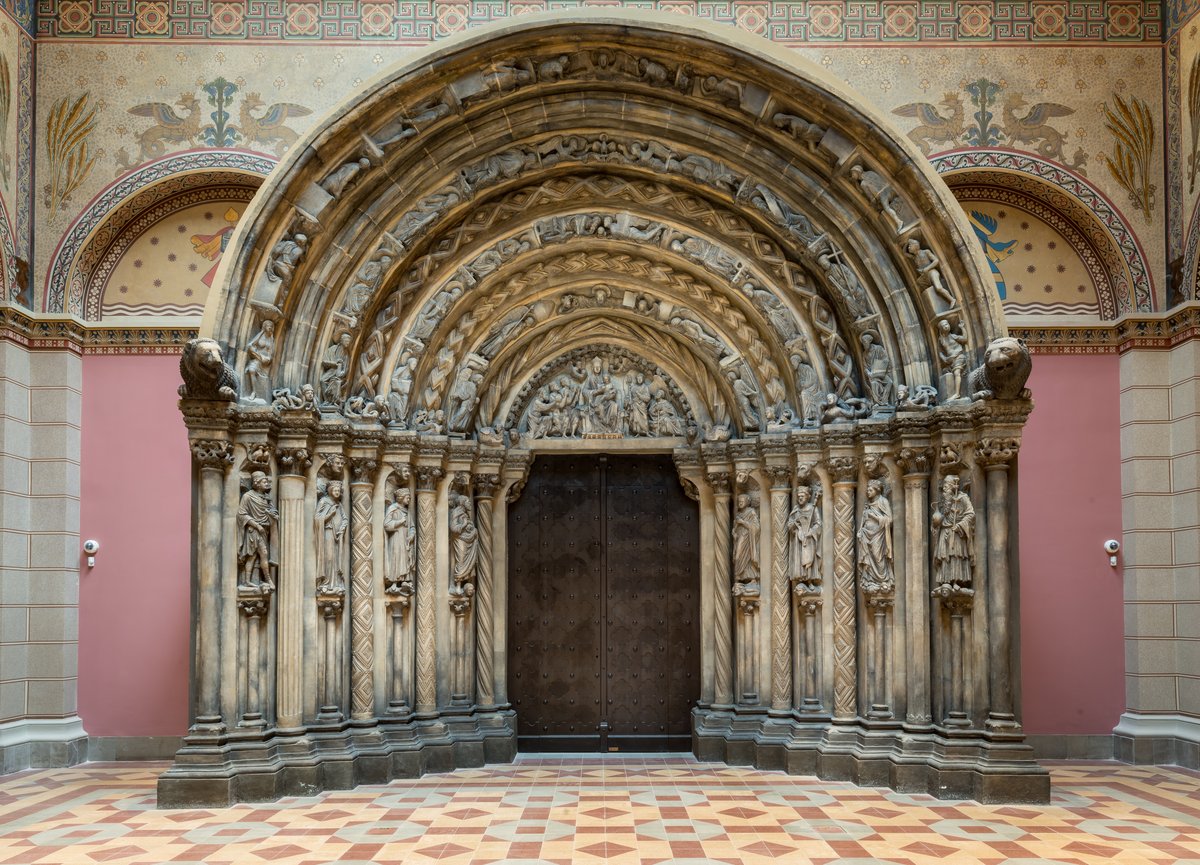
The Golden Gate of Freiberg Cathedral
Sculptures
For seventy years it was used as a warehouse and now it is one of the most striking, fascinat-ing and representative halls of the Museum of Fine Arts.
History
In the nineteenth century, it was a common trend in museums to establish collections of copies made of medieval and Renaissance masterpieces. Following this aspiration, the halls on the ground floor of the Museum of Fine Arts, built between 1900 and 1906, were designed with different architectural styles. Part of this project was the hall, which evokes the Romanesque style and is suitable for the exhibition of large plaster casts, such as the Golden Gate of the Freiberg Cathedral, still standing today. The museum’s Romanesque Hall also fell victim to the bombings of World War II and since plaster casts lost their significance and value, the damaged replicas were crowded into the Romanesque Hall, which was then permanently closed down for visitors. While other parts of the museum were later renovated in greater or lesser degree, the Romanesque Hall was more and more frequently used as a storage room and became overcrowded and chaotic. The museum’s most ornate hall thus became a “secret” space to which only some staff members had access.
Interior decoration and murals
The hall evoking the interior of a Romanesque basilica is articulated with monumental columns and pillars. The Romanesque interior design of the hall was probably the work of the building’s architects, Albert Schickedanz and Fülöp Herzog. The remarkably rich decorations were painted by Károly Miksa Reissmann and János Glaser.
The murals, conceived in the spirit of Christian iconography but also linked to a millennial theme, include depictions of the great figures of Hungarian history. The walls of the main nave are decorated with the coats of arms of the Hungarian state, partner states and provinces. The hall’s compellingly rich ornamentation also contains symbolic depictions, tree of life motifs and peacocks symbolising immortality, while the triumphal arches are adorned with zodiac signs. The griffon and dragon figures on the ceiling of the ambulatory bear the influence of German medieval mural and panel painting. The interior with an overall sacred character represents the pinnacle of decorative painting at the turn of the nineteenth and twentieth centuries.
Restoration
The Romanesque Hall was renovated as part of the most comprehensive reconstruction project in the history of the Museum of Fine Arts, which was carried out between 2015 and 2018 with the participation of almost seventy restorers and conservators. The restoration work could only begin after the situation of the plaster cast collection was settled: one part of the collection will be exhibited in a separate museum in the renovated Csillag [Star] Fortress, while the rest of the plaster casts will be displayed in the National Museum Restoration and Storage Centre in Szabolcs Street in Budapest, not far from Heroes’ Square.